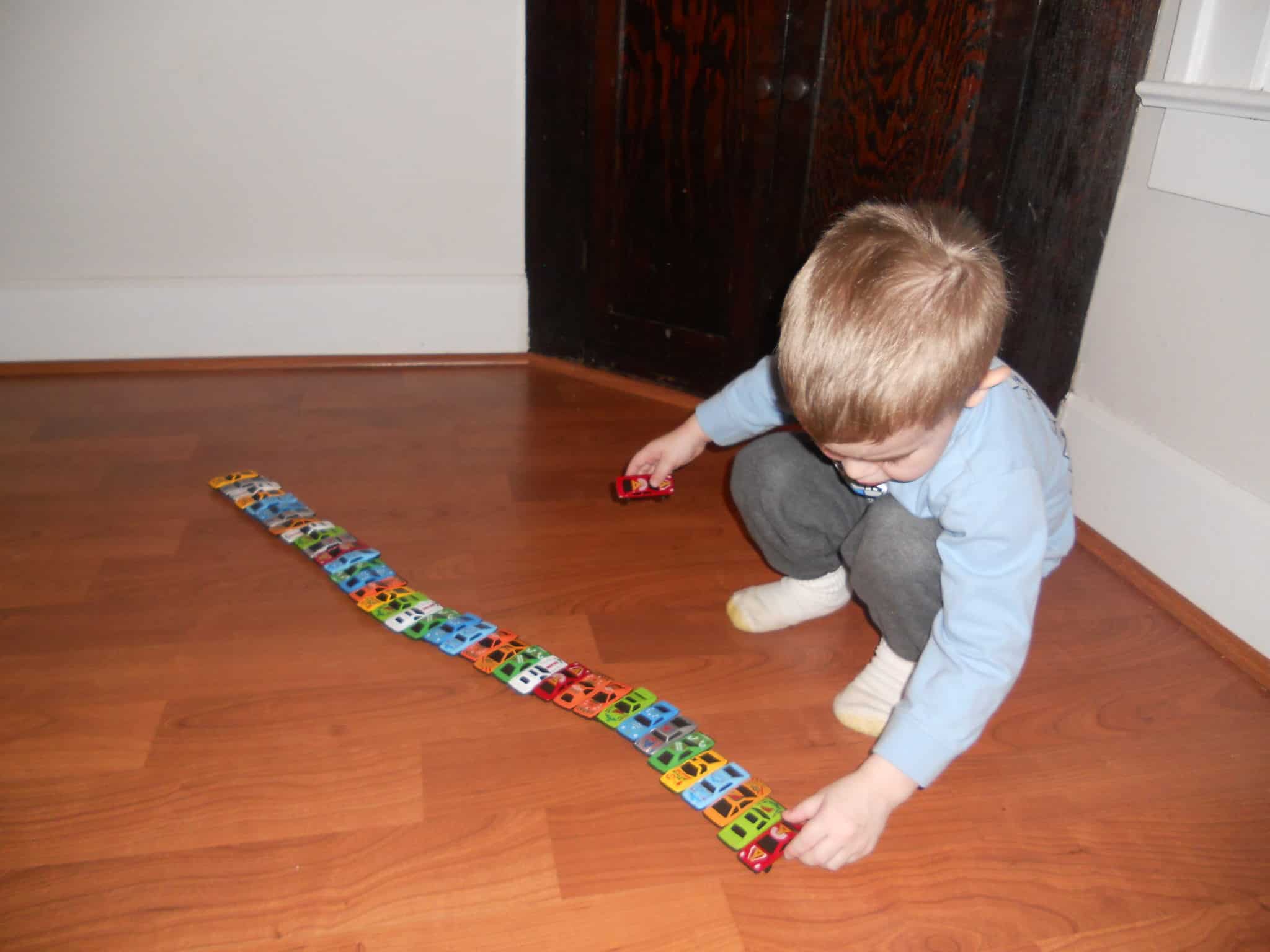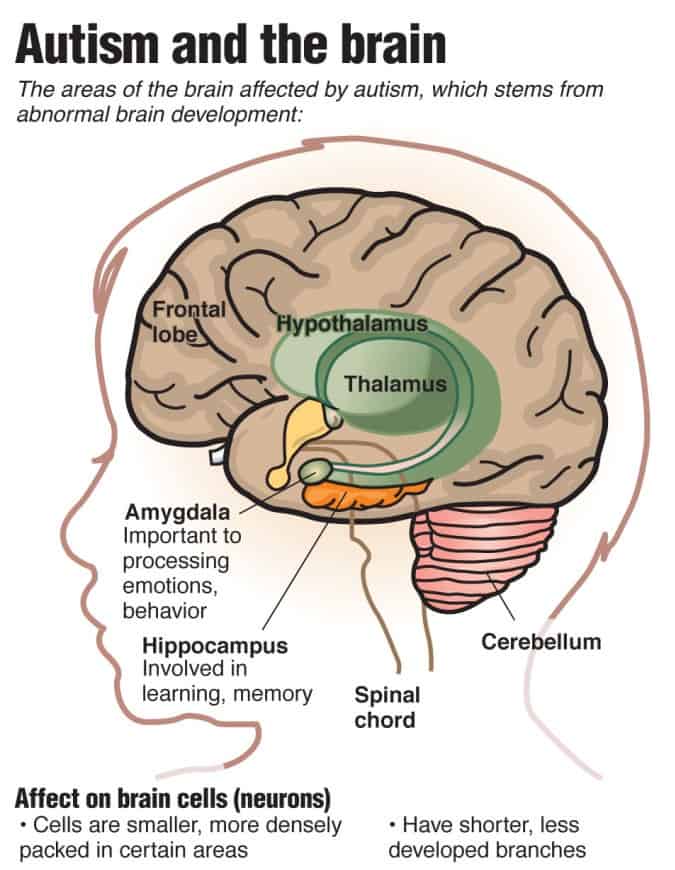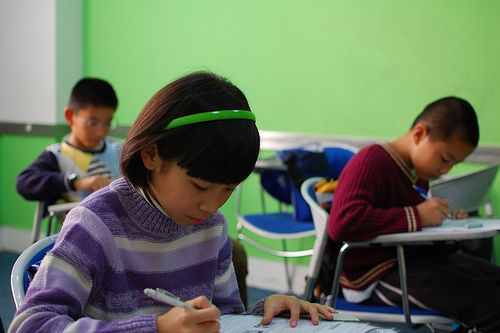My son is a different child after NAET sessions
Although skeptical, when I first heard about NAET, I knew it was something I had to try for my son. Then, a little more than 2.5 years of age, my son had several issues. He was speech delayed, a sensory seeker and highly active. He seemed to have a “brain fog” and with poor communication skills, he was extremely frustrated.
He also had one food allergy I was aware of, eggs. Almost two years later, many allergies unveiled and treated through NAET, my son is a different child. His brain fog is no longer. His speech, communication, sensory and behavior issues are minuscule if any. He no longer is allergic to eggs. The difference in him is quite major.
I continue to treat him because there are still more allergies we have not touched on and I’m still seeing improvements as he passes the, I strongly believe in NAET and I strongly believe in Dr. Yee. I certainly would not spend the time or money if I felt otherwise.
I take my younger son to Dr. Yee as well and will continue to until I feel my children no longer need NAET to rid them of allergies and are at their optimal health. -Elizabeth Castiglione
One child diagnosed with autism every 20 minutes in the UAE
Statistics indicate that every 20 minutes, a child is diagnosed with autism in the UAE and one out of every 110 children is autistic, said an official.
This pervasive disorder affects tens of millions worldwide and the world is still struggling to fully understand this condition, which first appeared in the early 1900s.
(Source: GULF NEWS, Published: 17:47 April 18, 2013)

What is Autism?

Autism is a lifelong, developmental disability that affects how a person communicates with and relates to other people, and how they experience the world around them.
Is Speech Delay in Toddlers a Sign of Autism?

Toddlers grow and change at a staggering rate, and every time you turn around, you probably notice something new that your child has mastered. During the early toddler years, most children begin to say words that eventually transition into phrases and sentences. While a language delay doesn’t automatically mean your child has autism, it is a red flag for the disorder. If your toddler isn’t saying any words yet, make an appointment with his pediatrician, who will run a test to determine whether his language delay is because of autism or something else entirely.
How does Autism affect communication?
The word “autism” has its origin in the Greek word “autos,” which means “self.” Children with ASD often are self-absorbed and seem to exist in a private world where they are unable to successfully communicate and interact with others. Children with ASD may have difficulty developing language skills and understanding what others say to them. They also may have difficulties communicating non-verbally, such as through hand gestures, eye contact, and facial expressions.

Not every child with ASD will have a language problem. A child’s ability to communicate will vary, depending upon his or her intellectual and social development. Some children with ASD may be unable to speak. Others may have rich vocabularies and be able to talk about specific subjects in great detail. Most children with ASD have little or no problem pronouncing words. The majority, however, have difficulty using language effectively, especially when they talk to other people. Many have problems with the meaning and rhythm of words and sentences. They also may be unable to understand body language and the nuances of vocal tones.
Below are some patterns of language used and behaviors that are often found in children with ASD.
- Repetitive or rigid language. Often, children with ASD who can speak will say things that have no meaning or that seem out of context in conversations with others. For example, a child may count from one to five repeatedly. Or a child may repeat words he or she has heard over and over, a condition called echolalia. Immediate echolalia occurs when the child repeats words someone has just said. For example, the child may respond to a question by asking the same question. In delayed echolalia, the child will repeat words heard at an earlier time. The child may say “Do you want something to drink?” whenever he or she asks for a drink. Some children with ASD speak in a high-pitched or singsong voice or use robot-like speech. Other children may use stock phrases to start a conversation. For example, a child may say “My name is Tom,” even when he talks with friends or family. Still, others may repeat what they hear on television programs or commercials.
- Narrow interests and exceptional abilities. Some children may be able to deliver an in-depth monologue about a topic that holds their interest, even though they may not be able to carry on a two-way conversation about the same topic. Others have musical talents or an advanced ability to count and do math calculations. Approximately 10 percent of children with ASD show “savant” skills, or extremely high abilities in specific areas, such as calendar calculation, music, or math.
- Uneven language development. Many children with ASD develop some speech and language skills, but not to a normal level of ability, and their progress is usually uneven. For example, they may develop a strong vocabulary in a particular area of interest very quickly. Many children have good memories for information just heard or seen. Some children may be able to read words before 5 years of age, but they may not comprehend what they have read. They often do not respond to the speech of others and may not respond to their own names. As a result, these children sometimes are mistakenly thought to have a hearing problem.
- Poor nonverbal conversation skills. Children with ASD often are unable to use gestures—such as pointing to an object—to give meaning to their speech. They often avoid eye contact, which can make them seem rude, uninterested, or inattentive. Without meaningful gestures or the language to communicate, many children with ASD become frustrated in their attempts to make their feelings and needs to be known. They may act out their frustrations through vocal outbursts or other inappropriate behaviors.
Seek medical help if your child is not hitting the following milestones:
Before 12 Months
It’s important for kids this age to be watched for signs that they’re using their voices to relate to their environment. Cooing and babbling are early stages of speech development. As babies get older (often around 9 months), they begin to string sounds together, incorporate the different tones of speech, and say words like “mama” and “dada” (without really understanding what those words mean).
Before 12 months of age, babies also should be attentive to sound and begin to recognize the names of common objects (bottle, Apple, etc.). Babies who watch intently but don’t react to sound may be showing signs of hearing loss.
By 12 to 15 Months
Kids this age should have a wide range of speech sounds in their babbling (like p, b, m, d, or n), begin to imitate and approximate sounds and words modeled by family members, and typically say one or more words (not including “mama” and “dada”) spontaneously. Nouns usually come first, like “baby” and “ball.” Your child also should be able to understand and follow simple one-step directions (“Please give me the toy,” etc.).
From 18 to 24 Months
Though there is a lot of variabilities, most toddlers are saying about 20 words by 18 months and 50 or more words by the time they turn 2. By age 2, kids are starting to combine two words to make simple sentences, such as “baby crying” or “Daddy big.” A 2-year-old should be able to identify common objects (in person and in pictures), points to eyes, ears, or nose when asked, and follow two-step commands (“Please pick up the toy and give it to me,” for example).
From 2 to 3 Years
Parents often see huge gains in their child’s speech. Your toddler’s vocabulary should increase (to too many words to count) and he or she should routinely combine three or more words into sentences.
Comprehension also should increase — by 3 years of age, a child should begin to understand what it means to “put it on the table” or “put it under the bed.” Your child also should begin to identify colors and comprehend descriptive concepts (big versus little, for example).
Causes of Speech Delay
Autism is certainly one cause of speech delay. Some individuals with autism never develop speech and language skills, although the majority can communicate in some way. There are, however, a number of other conditions which can also cause speech delay in young children:
- Cognitive impairment
- Learning disabilities
- Psychosocial deprivation
- Selective mutism
- Cerebral palsy
- Hearing loss
- Oral impairments (such as tongue or palate problems)
- Heavy metal poisoning
Early identification and treatment for speech and language delays are important. If you, or your doctor, believe your child has a delay, an evaluation by a speech and language pathologist can help to identify the problem, determine the cause and create a plan of action to work with your child.
Besides actual sounds and language development, a speech and language pathologist will look at what your child understands, whether your child uses gestures, such as pointing to communicate and how well your child’s mouth, tongue and muscles work together to create speech.
Based on the assessment of the speech and language pathologist and evaluation to look for other early warning signs of autism, your doctor will decide if further evaluation is necessary and may refer you to early intervention services to further help your child’s development.
Warning Signs of a Possible Problem
If you’re concerned about your child’s speech and language development, there are some things to watch for. An infant who isn’t responding to sound or who isn’t vocalizing is of particular concern.
Between 12 and 24 months, reasons for concern include a child who:
- isn’t using gestures, such as pointing or waving bye-bye, by 12 months
- prefers gestures over vocalizations to communicate at 18 months
- has trouble imitating sounds by 18 months
- has difficulty understanding simple verbal requests
5 Ways to Encourage Communication with a Non-Verbal Child
1. Enter into their world by using motivating people, items, etc. to encourage communication
For many children, food is motivating. For others, it could be a specific toy, movie, friend, family member or neighbor.
For example, if your child loves the interaction with a specific family member, use this motivating person to encourage communication. If you are using this person to encourage communication, use a variety of visual and auditory strategies (e.g. use a picture of the family member and/or model the name of this individual).
Encourage your child to point to the picture of this person or exchange the picture with you to request it. When they are able to point or exchange the picture, the motivating person could come over to the child and give him or her a hug to fulfill the request.
2. Label feelings as they occur
For example, if your child is reaching for food in the fridge, label the feeling. For example, say “You are hungry”. The more your child hears the particular feeling with a specific behavior, the better they will be able to understand that feeling.
This strategy needs to be consistent and occur naturally. Modeling a feeling can happen when your child is excited, sad, hurt, happy, etc. For example, as your child expresses their excitement, say “I see you are excited”. If you have a picture of “excited” it can even reinforce the concept more.
3. Assume competence
Assuming competence is probably one of the most important things we can do as a parent, caregiver, therapist, teacher, etc. Assuming competence for any child whether they have a disability or not is a form of empowerment.
Assuming that your child CAN do it and WILL do it is powerful. The other concept is speaking to a child with Autism like any other child. Children with or without disabilities pick up very quickly when an adult or another child is speaking to them in a different way. This can be a strategy that can very helpful when telling others how to speak to your child.
4. Model Language and use Aided Language Stimulation
Modeling language is an excellent strategy. Many times a child may not know the specific word or structure of a sentence. For example, if your child wants water at the dinner table and indicates that to you in a way that you will understand, say “I want water.” Giving the model will help improve your child’s receptive and expressive language.
Adding a word such as “please” or in a question form can also provide clues to appropriate ways to ask for a particular item that can improve pragmatic language skills. Aided Language Stimulation (term coined by Carol Goossens) is a technique that can be extremely helpful during a variety of activities to help build language and communication.
5. Use a total communication approach using both unaided and aided communication
What is aided and unaided communication?
Aided communication is anything other than the body that you use to communicate. This can be pictures, photographs, words, etc. Many children with autism who are not able to use speech for functional communication often use pictures, photographs, words and/or communication systems to express themselves.
Unaided communication is using your body to communicate (e.g. gestures, facial expressions, sign language, etc.). I often get asked if using pictures for communication is going to take away any gestures or speech that the person is using, and the answer is always no. The best way to communicate is with a total communication approach, which includes all modes of communication.
None of the use communicates with just speech. Sometimes a friend or spouse can understand our message with a simple gesture or facial expression. Encourage all modes of communication whether unaided or aided.
Speech Therapy for Autism
Speech therapy is the best way to improve speech skills and allow a child with autism to communicate effectively.
Speech therapy for autism may involve expanding a vocabulary or teaching a nonverbal communication system as an alternative. A licensed speech therapist can help a child with autism do the following:
- Build vocabulary and encourage verbal speech
- Understand word meaning and context
- Figure out speech pragmatics in order to understand the proper use of speech in social situations
- Participate in a two-way conversation
- Learn a nonverbal communication method such as the Picture Exchange Communication System (PECS)
Other therapies
Speech therapy
Speech therapy is an intervention service that focuses on improving a child’s speech and abilities to understand and express language, including nonverbal language. Speech therapists, or speech and language pathologists (SLPs), are the professionals who provide these services. Speech therapy includes two components:
1. Coordinating the mouth to produce sounds to form words and sentences (to address articulation, fluency, and voice volume regulation)
2. Understanding and expressing language (to address the use of language through written, pictorial, body, and sign forms, and the use of language through alternative communication systems such as social media, computers, and iPads).
ABA therapy
Applied Behaviour Analysis (ABA) is an evidence-based, intensive education therapy for children with an Autism Spectrum Disorder (ASD). It is scientifically proven to be effective and is the preferred method of treatment for ASD.
ABA helps children develop their social, academic, self-help and behavioural skills needed to interact with others and to cope with the challenges of everyday life. ABA therapy takes the form of a highly structured program designed to meet the individual requirements of each child while building the foundations for life-long learning.
Occupational Therapy
Occupational therapy is the only profession that helps people across the lifespan to do the things they want and need to do through the therapeutic use of daily activities (occupations). Occupational therapy practitioners enable people of all ages to live life to its fullest by helping them promote health, and prevent—or live better with—injury, illness, or disability.
Common occupational therapy interventions include helping children with disabilities to participate fully in school and social situations, helping people recovering from an injury to regain skills, and providing supports for older adults experiencing physical and cognitive changes.
How does NAET work
With NAET, we get to the root of the problem, identifying and eliminating the allergen that is causing the recurring symptoms.
NAET can remove the adverse effect of any Allergic/Intolerant food in the body including all the above-listed food products, and create homeostasis in the body in the presence of the offending allergen (without avoiding for life). During the NAET treatment, your brain will create a new friendly memory towards the allergen and will imprint and store in the memory bank. During the process, the old memory about the allergen’s adverse effect is erased or forgotten.
After completion of the NAET treatment, the allergen becomes non-allergen and an irritant becomes non- irritant to your energy field and the body will learn to relax naturally in the presence of the new friendly substance.
NAET treatment provides an effective treatment modality for children with autism to decrease autistic traits and improve their speech, language, communication skills, social interactions, sensory and cognitive awareness, and overall physical health and behavior.
Emotional Factors
Various types of emotional allergies exist. We need to recognize them and eliminate them to be healthy. Until recently no one gave any importance to emotional blockages and the diseases arising from them. For years people with emotional problems were sent to psychiatrists, who labeled the sufferers “Mentally ill,” institutionalized them. It was recognized as a serious problem at the time.
Emotional blockages can happen due to allergies, which affect the emotional aspect of the meridian or organ. If the blockages remain at the emotional level for a long period of time, they can begin to affect physical and physiological levels in the body, eventually turning into disease.
Therefore, it is necessary to isolate and remove the cause of emotional blockages as soon as possible. NAET deals with the whole body, removing blockages at the physical, physiological and emotional levels. Only then can a person be truly healthy. I have treated many patients with emotional blockages.
Children could be having physical energy interference with his/her parents. This could cause irritation in the child’s body and brain.
To fully understand NAET, one needs to know some Oriental medical principles. NAET has taken the acupuncture and Oriental medical theories and developed a technique that can eliminate the reaction from the root.
MRT (Muscle Response Testing)
By clearing food and environmental and chemical allergens from the protocol, we strengthen the immune system, eliminate the root cause of the symptoms in Autism and in bonus it also helps improve your digestion and absorption. This allows the body to get the necessary nutrients, which are essential for life.
One allergen is cleared per visit. Each individual has a different genetic makeup and health history so the number of sessions required varies from one individual to another.
Now my son is positively chatty because of NAET
“One year ago, my son Tyler barely spoke. Now he is positively chatty. We owe Tyler’s success not only to traditional therapies but to NAET. NAET is something that my logical mind cannot grasp. When I first heard about friends that used it for migraines and dog allergies, I said ‘That’s crazy!’
Then I got laid off and had the good fortune to be watching a news show where parents of a young autistic boy spoke about NAET and how their son had no trace of autism left after going through the treatments. I consider it divine intervention that I had the television on when this show came on.
At the time of his diagnosis, Tyler flapped, rocked, spun toys, had a fascination for fans, like to spin, was sensitive to certain textures, liked to stare at light, and barely spoke. Today, almost all of the autism-related behaviors have disappeared. His first sentence came about 4-6 weeks after we started treatments.
After 3 months, he no longer needed speech therapy. Some people who know us have a hard time believing he was ever diagnosed on the spectrum. Now, his ABA therapist feels that Tyler does not need ABA anymore. The school district strongly feels that Tyler’s autism diagnosis will be lifted. NAET played a huge role in this.
I feel that my job is to inform as many people of NAET as possible. I believe it is my job to let people know what worked for Tyler and at the end of the day, I can rest assured that I have truly done everything I can for Tyler. Not only that, but it worked.”
-T. Rustyak
Connect with us through our Facebook page at www.facebook.com/NAETDubai or visit: www.naetdubai.com. You will find a wealth of information here along with an opportunity to speak confidentially through WhatsApp 056-639 0197 or Phone Call 04-420 1633.
You may also email us at admin@naetdubai.com






3 Responses
Thank you for your comment ???? Please don’t forget to subscribe to our blog and you will receive mails once we published new blogs.
Thank you so much for your comment. Please don’t forget to subscribe to our blogs. Feel free to contact us if you need any further information.